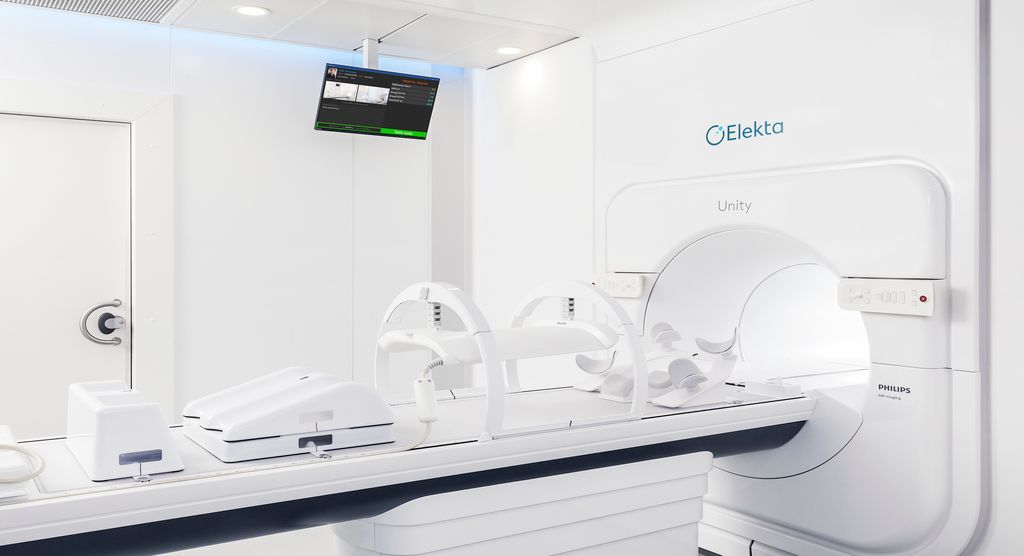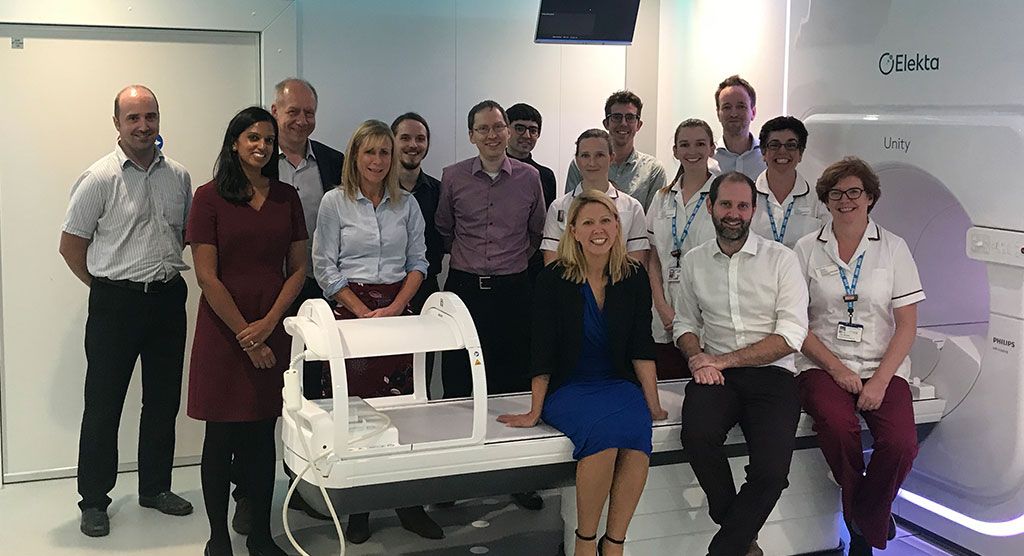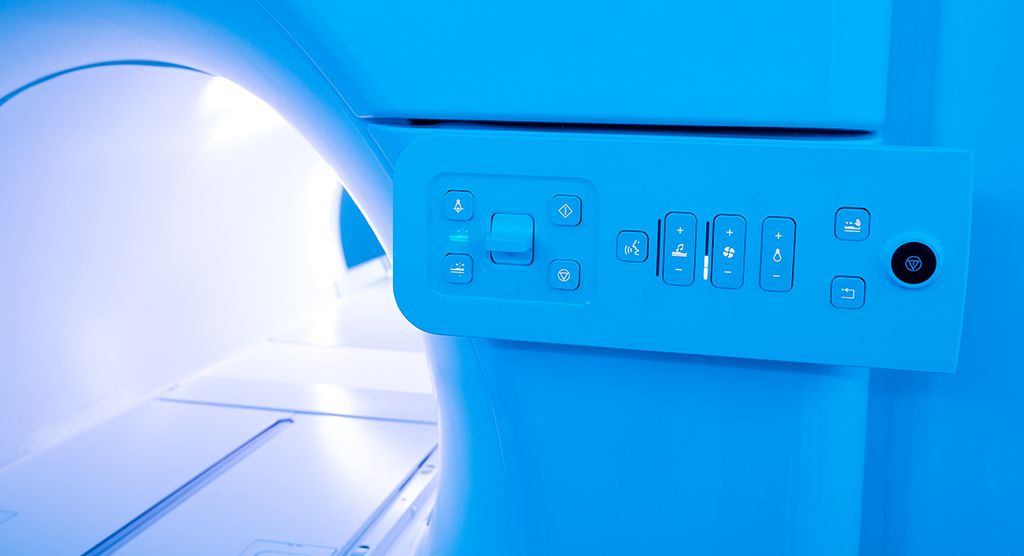Second clinical study on Elekta MR-Linac adds to evidence base for MR-guided radiotherapy
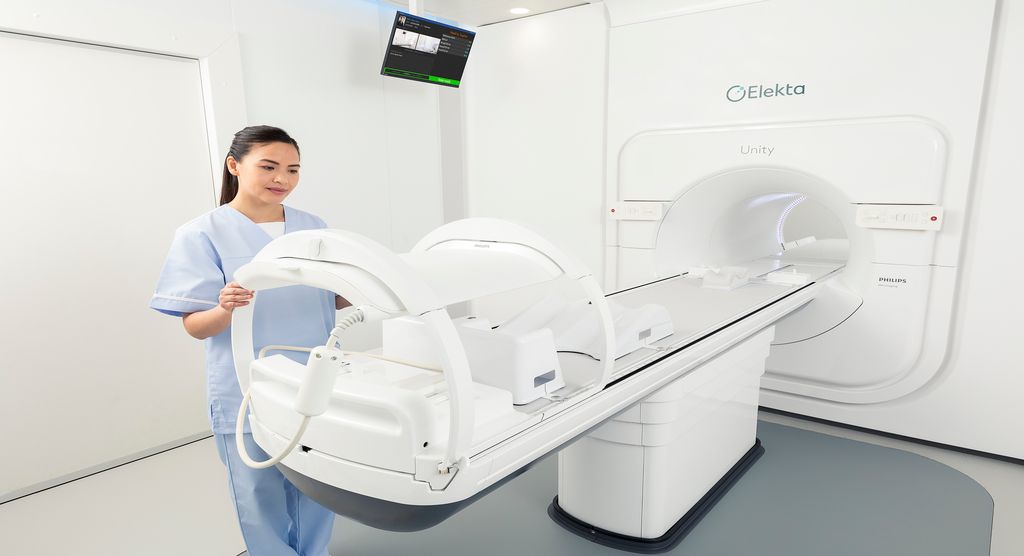
Researchers at Denmark’s Odense University Hospital report on 19 patients treated using Elekta Unity MR-Linac
Clinicians at Odense University Hospital (OUH) used their Elekta Unity magnetic resonance radiation therapy (MR/RT) to treat 19 patients, they assessed the critical operational parameters of MR-guided radiotherapy, including patient compliance, workflow efficiency, treatment times and dosimetric accuracy. They reported in a paper published in Acta Oncologica that “[MR-Linac] treatment, including daily MRIs, plan adaptation, and accurate dose delivery is possible within a clinically acceptable time-frame, which is well tolerated by the patients.”1
This study from Odense University Hospital (OUH) follows the May 2019 publication of the first clinical paper on MR/RT feasibility by researchers at University Medical Center Utrecht (UMCU, Utrecht, the Netherlands).2
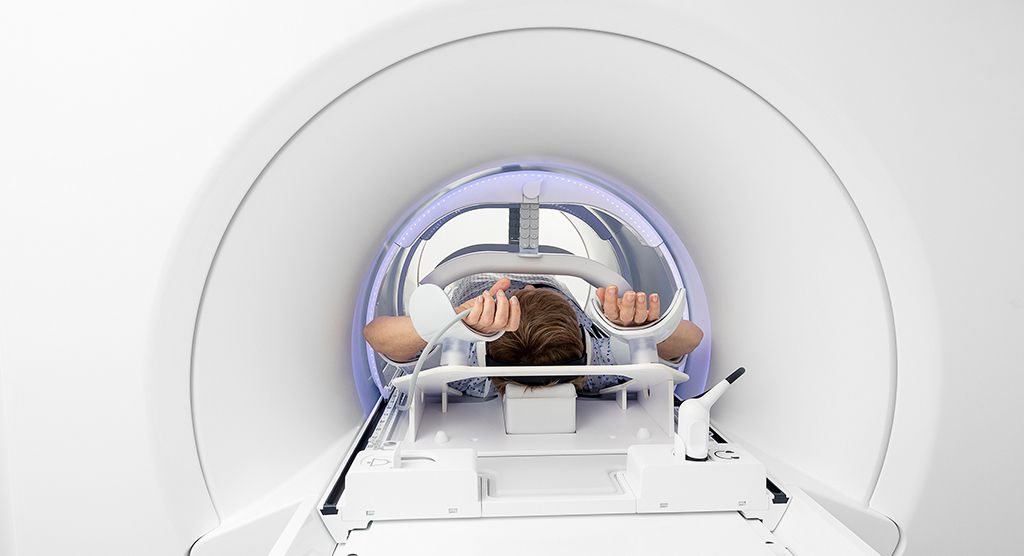
“We are very gratified that Consortium members, such as OUH, are enthusiastically putting Elekta Unity to clinical use and reporting their positive experiences,” says Joel Goldwein, Sr. Vice President, Medical Affairs. “The OUH clinicians confirm previous clinical studies that point to the feasibility of high precision, individualized and adaptive radiotherapy using MR guidance.”
Clinicians at Odense University Hospital used their Elekta Unity to treat 19 patients, encompassing 176 fractions and cases varying from prostate treatments to SBRT treatments of lymph nodes, as well as bone metastases and castration by irradiation of the ovaries.
MR-guided radiotherapy with the MR-Linac enables two different types of daily plan adaptation: Adapt to Position (ATP) and Adapt to Shape (ATS), both of which permit changes to the therapy that compensate for shifts in target position or treatment-related changes in target shape for each patient. In ATP, the shape and weight of beam segments in the reference plan are adjusted to match the current position of targets and organs-at-risk (OAR) based on rigid registration. In ATS, a new plan is created to match the anatomy of the day using deformable image registration for contour propagation from the reference plan to the session MRI, followed by manual adjustment of the contours if necessary. OUH used ATS in 28 percent of the 176 fractions.
Results
- Session times – the median session time (from patient in to patient out) for ATP was 26 minutes. On several occasions, it was possible to treat two patients within 55 minutes. A median time of 12 minutes was used for contouring when using ATS for a total median session time of 42 minutes.
- The median gamma pass rate (2 mm, 2% global max) for the adapted plans was 99.2 percent, which indicates good agreement between planned and delivered dose.
- All of the patients found the treatment couch and position comfortable and the noise in the room (from the switching of the magnetic gradients of the MR-Linac’s MRI component) was easily tolerated. No discomfort or dizziness was experienced and no anxiety was reported among the patients.
“For some of the patients treated, higher doses to larger OAR volumes would have been the case if the same dose to the target would have been delivered on a standard linac,” says OUH principal investigator Anders S. Bertelsen. “For example, it would have been challenging without superior soft tissue contrast compared to cone beam CT-based treatments to treat oligo metastases in soft tissue regions, prostate without seeds, as well as partial prostate radiotherapy in which urethra sparing is crucial.”
He adds that in terms of normal tissue sparing, it was possible for the ovarian castration treatments to reduce the treated volume (receiving 15 Gy) from 1000 cm3 to just 50 cm3 using Elekta Unity, because the ovaries are now easily visualized.
“Without daily adaptation, it would have been impossible to deliver the same dose in the uterus boost treatment, while achieving strict dose constraints to the surrounding critical OARs with large inter-fractional changes in shape and position,” Dr. Bertelsen says. “Based on the 3D MRIs acquired during beam-on, it seems likely that the PTV margin could be reduced when daily plan adaptation and MR image guidance is used.”
The authors note that the next indications for Elekta Unity at OUH will likely be treatments of the bladder, rectum and cervix, as well as the prostate, including lymph node irradiation.
# # #
- Bertelsen AS, Schytte T, Møller PK, et al. First clinical experiences with a high field 1.5 T MR linac, Acta Oncologica,
DOI: https://doi.org/10.1080/0284186X.2019.1627417 - Werensteijn-Honingh AM, Kroon PS, Winkel D, et al. Feasibility of stereotactic radiotherapy using a 1.5 T MR-linac: Multi-fraction treatment of pelvic lymph node oligometastases. Radiotherapy and Oncology, Volume 134, 50-54.
DOI: https://doi.org/10.1016/j.radonc.2019.01.024

